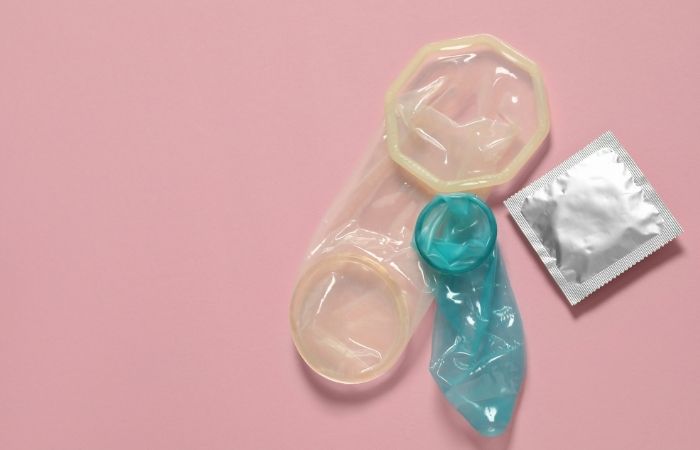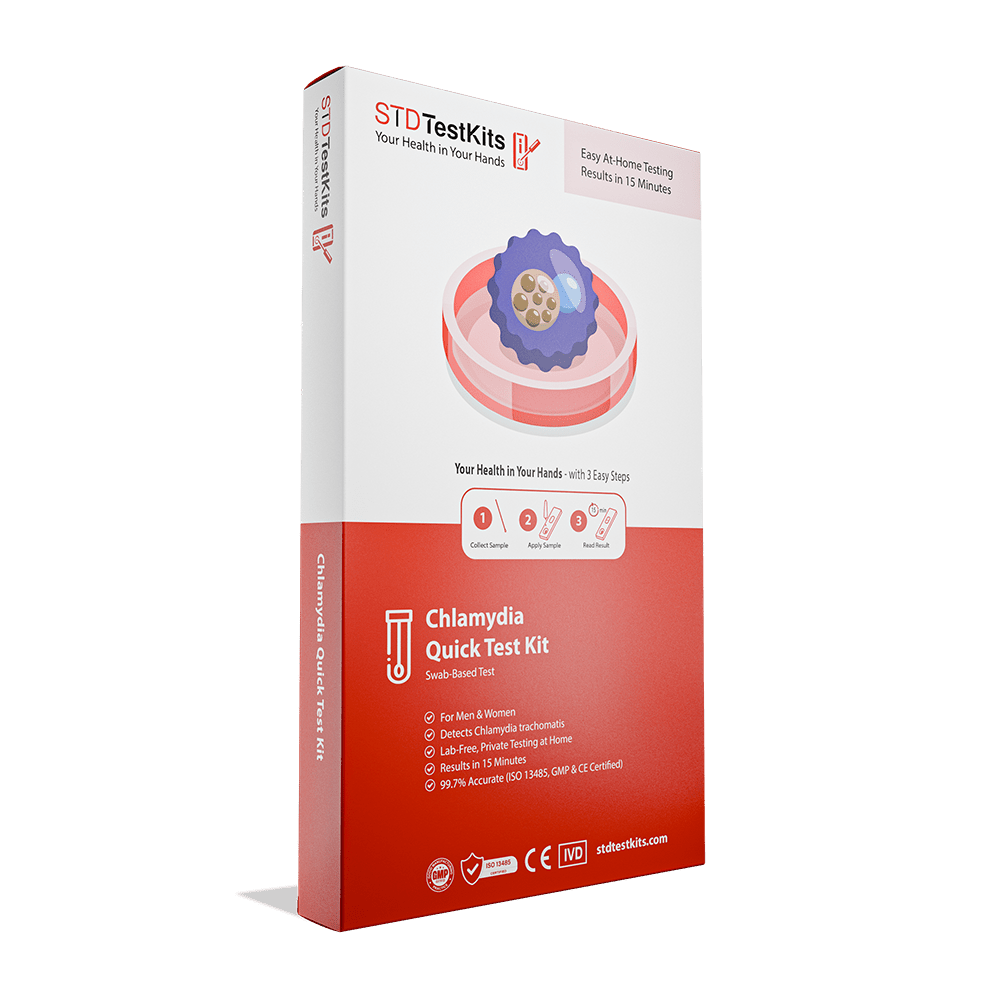STD Risk Checker Quiz: Do You Need to Get Tested?
Quick Answer: If both you and your partner tested positive for the same STD, your immediate steps are: 1) begin treatment promptly; 2) avoid sex until cleared; 3) identify whether retesting is needed; 4) explore how the infection was transmitted; and 5) have open, stigma-free conversations about trust, protection, and future testing. Shared diagnosis ≠ shared blame, but it does mean shared responsibility.
When Both Partners Test Positive: What That , Really, Means
For some couples, testing together is a bonding moment. For others, it’s a bombshell. Either way, if you both come back positive for the same infection, say, chlamydia or gonorrhea, your minds probably jump to three questions:
Who had it first? Did someone cheat? Is it even treatable?
Here’s the truth: most STDs spread quietly, with no symptoms. One or both of you could’ve had it for months. It may not have come from infidelity, it could’ve been dormant, picked up from a previous partner, or missed during earlier testing. The more common the STD, the blurrier the timeline. And unless you were both tested on the same day before sex began, there’s no way to know who had it first.
So drop the blame and focus on what matters: you both know now, and that knowledge puts you in control.

People are also reading: Living with Herpes How I Stopped Letting Triggers Ruin My Sex Life
Start Treatment, Even If You Feel Fine
Feeling totally normal? That’s not a free pass. Many STDs show no symptoms at all, especially trichomoniasis, chlamydia, and oral/throat gonorrhea. Even silent infections can lead to serious complications like pelvic inflammatory disease, epididymitis, or infertility. And if left untreated, you risk reinfecting each other in an endless loop.
So yes, treat both of you. Fully. At the same time.
If you tested through a clinic, you’ll get a prescription or direct treatment. If you tested with an at-home STD kit, follow the provider’s instructions for follow-up care. Some test services include telemedicine referrals. Others recommend local clinics or pharmacies.
Important: Most treatments don’t work instantly. You’ll usually need to wait 7 days after completing antibiotics before having sex again, even with each other.
Do We Need to Test for More Than One STD?
Probably. Many people are co-infected without knowing it, especially if you didn’t do a full panel. For example, testing positive for chlamydia doesn’t mean you’re clear of syphilis, HIV, or herpes. In fact, one infection can make your body more vulnerable to others.
If you only tested for one STD (e.g., a single-panel urine test), it’s time to go deeper. Consider a combo kit that screens for 3–6 infections at once. That way, you won’t miss anything hiding in the background.
Common add-on tests for couples who both test positive include:
- Syphilis – often silent, serious if untreated
- HIV – early testing can reduce transmission risk
- Herpes (HSV-2) – not always part of routine panels
- HPV – especially for those with cervixes
The sooner you know, the faster you both can move from panic to prevention.
Can We Still Have Sex?
Yes, but not yet. Just because you both tested positive doesn’t mean you’re automatically in the clear to get back between the sheets. STDs don’t magically cancel each other out. If you rush it, you risk passing the infection back and forth like a game of viral hot potato. Give your bodies time to fully heal.
Figure 1. Timing recommendations for safely resuming sex after a shared STD diagnosis.
This isn’t a sex ban, it’s a reset. Explore touch that isn’t about performance. Rebuild comfort. Set new boundaries. When you finally say “yes” again, let it be from a place of trust, not fear.
But Who Gave It to Who?
This is the part that gets sticky. You’re sitting there with your partner, you’ve both tested positive, and someone asks the question that’s been hanging in the air: “So... who had it first?”
Here’s the no-fluff truth: You may never know. Unless both of you were tested on the exact same day before having sex and again after, there’s no way to trace the “patient zero” of your relationship. STDs don’t come with timestamps. Many are asymptomatic for weeks or months. You could’ve been carrying it before the relationship started, or picked it up early and passed it unknowingly.
Still, this question matters emotionally. If you’re in a committed relationship, there’s the fear: Did someone cheat? Sometimes that’s the case. Sometimes it isn’t. But unless there’s clear evidence, going full detective-mode rarely leads to healing. It leads to blame spirals.
Instead, try this reframing:
“We both have this now. What do we want to do about it together?”
Blame won’t get you better. But teamwork will.
How to Talk About It (Without Burning Down the Relationship)
This conversation can go two ways. You can use the diagnosis as ammo in an emotional war… or as a pivot toward radical honesty. What’s going to serve you better long-term?
If there’s tension, cheating concerns, or trust issues, don’t shove them under the rug. But don’t let the STD diagnosis become the scapegoat either. Focus first on what’s true:
- You’re both infected.
- You’re both being treated.
- You’re both in this together, unless you choose otherwise.
Here are a few openers that keep the dialogue grounded:
“I’m scared, too, but I don’t want this to break us if it doesn’t have to.”
“Let’s make sure we both fully heal before we decide anything else.”
“This sucks, but it’s giving us a chance to be honest in a way we haven’t before.”
Consider couples therapy if old wounds resurface. Many clinics offer sliding-scale sessions, especially for sexual health or trauma recovery. You don’t need to have all the tools yet. You just need a willingness to build them.
Retesting: Why You’ll Need to Do It Again
Getting treated isn’t the finish line. It’s the halfway point. Retesting ensures that the infection is gone, treatment worked, and there’s no surprise reinfection between you.
Here’s the recommended timeline for common STDs when you’re retesting as a couple:
Figure 1. Retesting timeline recommendations after a shared STD diagnosis.
If you used an at-home STD test originally, you can easily retest with the same method. Look for kits that support repeat testing or offer discreet combo panels, no clinic trip required.
Reinfection: The Thing No One Warns You About
So many couples go through the stress of testing, the awkward treatment phase, and then… they jump right back into sex too soon. One person hasn’t finished antibiotics. The other skips retesting. Suddenly, boom, you’re reinfected.
This is called “ping-ponging,” and it’s not just annoying, it can lead to treatment resistance or complications.
To avoid it:
- Wait until both partners have completed treatment + full wait period
- Retest together, even if you’re asymptomatic
- Use protection (yes, even now) for at least a few weeks post-treatment
If one partner doesn’t follow through, it puts you both back at square one. So check in, follow up, and don’t assume it’s “fixed” just because the meds were taken.
Rebuilding Sexual Trust After a Shared STD Diagnosis
Okay. You’ve both tested positive. You’ve both gotten treated. You’ve waited the full “no-sex” window and even retested to make sure everything’s cleared. But when the moment finally comes to be intimate again… one or both of you freezes.
That’s not weird. That’s trauma.
Getting an STD diagnosis, even one that is shared, can make you feel unsafe. Especially if you thought one of you was cheating, missed protection, or had symptoms while the other didn't. It's not just about being afraid of getting sick; it's also about trusting your body, your emotions, and whether the closeness feels safe again.
Here’s what rebuilding might look like (spoiler: it’s not just jumping back in):
- Talk first, touch second. Share your fears without pressure. “I’m a little nervous” is a full sentence.
- Start slow. Maybe it's just cuddling. Maybe it’s just kissing. Maybe that’s all for now. Let that be enough.
- Re-negotiate consent. You’ve both changed. So have your needs. Ask again. Listen better.
- Normalize condoms or dental dams. Even if you weren’t using them before, now may be a fresh start for protective habits.
Intimacy after an STD doesn’t have to be less passionate. But it does need to be more honest. That kind of trust? It can feel way better than before, because you’ve earned it together.

People are also looking for: Syphilis or Something Else? How to Tell If That Bump Is Dangerous
Do We Have to Use Condoms Forever Now?
This is one of the most common, and misunderstood, questions couples ask post-diagnosis. The answer? It depends on the infection, and what protection you want going forward.
For treatable bacterial STDs (like chlamydia, gonorrhea, trichomoniasis):
- Once both of you are cleared and retested, condom use is up to your comfort level.
- If you're monogamous and trust is strong, some couples choose to stop. Others use condoms as a form of post-infection boundary-setting.
For viral STDs (like herpes, HIV, or HPV):
- Protection helps prevent outbreaks, reduce transmission risk, and support medication strategies (e.g., PrEP, antivirals).
- Many couples use condoms during active symptoms only, or switch to consistent use with new flare-ups or partners.
The key is to talk openly. Ask: What feels safe? What doesn’t? Where’s our shared comfort zone? Condoms aren’t punishment, they’re just tools. You get to decide how to use them now, together.
How to Handle Disclosure Going Forward
This is one of the most common questions couples ask after they get a diagnosis, but it's also one of the most misunderstood. The answer is It depends on the infection and what kind of protection you want in the future.
For bacterial STDs that can be treated, like chlamydia, gonorrhea, and trichomoniasis:
- Once you both pass the tests and are cleared, you can use condoms as much or as little as you want.
- Some couples decide to stop if they are monogamous and trust each other.
- Some people use condoms to set limits after they get an infection.
For STDs caused by viruses, such as herpes, HIV, or HPV:
- Protection helps keep outbreaks from happening, lowers the risk of spreading the virus, and supports medication strategies like PrEP and antivirals.
- A lot of couples only use condoms when they have active symptoms, or they start using them all the time when they get new flare-ups or partners.
The most important thing is to be honest. Ask yourself, "What feels safe?" What doesn't? Where is the place we both feel safe? Condoms are not punishment; they are just tools. You and I can now choose how to use them.
What If You’re Not Sure You Want to Stay Together?
This is the realest part of the whole process. Some couples come through a shared STD stronger than ever. Others realize the infection revealed cracks in the foundation that were always there.
Here’s what matters most:
- Your health comes first. Always finish treatment, retest, and protect yourself, no matter how the relationship ends.
- Your decision is yours. You don’t owe it to anyone to stay just because they’re hurting too.
- You can forgive without staying. And you can stay while still working through hurt. Either choice takes courage.
This diagnosis doesn’t have to define your relationship, but it can help you decide what kind of connection you really want moving forward.
FAQs
1. Is this the end of our relationship?
Not unless you let it be. A shared STD can break you open, or bring you closer. Plenty of couples come out of this stronger because it forces real talk about sex, honesty, and safety. But yeah, it’ll take work. Especially if trust or communication was already rocky. You don’t have to decide everything today. Just decide to handle this, together.
2. Could we have given it to each other… over and over?
Yup. That’s called “ping-ponging.” It’s when you pass the infection back and forth because one person wasn’t treated properly, or didn’t wait long enough before resuming sex. That’s why doctors say: both of you get treated, both of you finish your meds, and both of you wait at least 7 days post-treatment before jumping back into bed.
3. Does this mean someone cheated?
Not necessarily. STD timelines are fuzzy. Some infections hide out for months with zero symptoms. One of you could’ve picked it up from a past partner and not known. Unless there’s hard proof, chasing blame won’t help. Start from the truth: you both tested positive. What you choose to do next matters more than detective work about the past.
4. Can we have sex again or is that off the table?
Totally back on the table, as long as both of you are done with treatment, symptom-free, and ideally retested to confirm. Until then? Hold off. Trust us: nothing kills the mood like an accidental reinfection. In the meantime, focus on non-sexual intimacy. Touch. Talk. Heal. You might even discover new kinds of closeness that don’t revolve around sex (yet).
5. Should we use condoms now, even if we didn’t before?
Honestly? It might be a good idea. At least for a while. Not as a punishment, but as a way to reset, rebuild trust, and prevent future surprises. Some couples go back to raw once they’re both cleared. Others make condoms a new part of their routine. It’s not about right or wrong, it’s about what helps you both feel safe again.
6. I feel embarrassed and gross. Is that normal?
Normal? Yes. Deserved? No. Let’s be clear: an STD isn’t a character flaw. You’re not dirty. You’re not reckless. You’re human. And you're taking care of it, which is more than a lot of people do. Shake off the shame, it’s outdated, and it’s not helping. Compassion is where healing starts. Apply liberally.
7. How do we tell if treatment actually worked?
Easy: retest. Most STDs need a follow-up after treatment to confirm they’re gone, especially chlamydia, gonorrhea, and trichomoniasis. Don’t guess. Don’t go by “I feel fine.” Infection doesn’t always come with symptoms. Use a discreet home test kit if the clinic feels too heavy right now. No judgment, just peace of mind.
8. Can we trust each other again after this?
That’s a slow road, but yeah, it’s possible. Shared health stuff can deepen intimacy, weird as that sounds. But trust isn’t rebuilt overnight. It takes consistent action, transparency, and a whole lot of honest conversations that might make your stomach flip. You don’t have to be perfect. You just have to show up real.
9. Should we talk to a therapist?
If you’re feeling stuck, hell yes. Sex therapists, couples counselors, even hotline services can help you untangle the emotional knots that a diagnosis drops in your lap. There’s no shame in needing support. You’re trying to move forward together. That’s brave as hell, and worth every tool you can get your hands on.
10. What if we break up after this?
Then at least you’re walking away informed, treated, and stronger. Some relationships aren’t built to hold this kind of storm, and that’s okay. Your health journey doesn’t stop because the relationship does. If anything, it means you’re taking your next steps solo and empowered. Either way, you’ve got this.
Where Do We Go From Here?
When you both test positive, it doesn’t mean the relationship is broken. It means the curtain has been pulled back. Now, everything’s on the table, your pasts, your risks, your honesty, and your next moves.
This moment can fracture a connection, or it can fortify it. But either way, it's a beginning. Not the end.
Keep talking. Keep testing. Keep showing up for each other with clarity instead of shame. The couples who thrive after this? They treat the diagnosis as a turning point, not a death sentence.
Want a quiet way to retest, rebuild, or double-check after treatment? Try a discreet at-home combo test. No appointments. No judgment. Just answers.
How We Sourced This Article: They include guidelines on treating STI from the CDC, research studies about transmission of STI from couples, counseling guidelines on disclosure that are trauma-informed, and case studies of people who have had experiences as anonymous partners due to shared diagnoses of STI. About fifteen credible sources have been used for this article, and some of them have been highlighted below as some of the most relevant ones.
Sources
1. CDC – 2021 STD Treatment Guidelines
2. Next steps after testing positive for gonorrhea or chlamydia | CDC
3. Talk. Test. Treat. – What to do when you’ve been diagnosed with an STI | CDC
4. Partner Services: Notification & Treatment of sexual partners | CDC
5. Get Tested for STIs: Guidance after a positive result | American Sexual Health Association
About the Author
Dr. F. David, MD is a board-certified infectious disease doctor who works with couples and individuals on sexual health, quick testing, and care after a diagnosis. Dr. David is known for his nonjudgmental, solution-focused approach.
Reviewed by: Sasha El-Masri, MFT, CST | Last medically reviewed: November 2025







